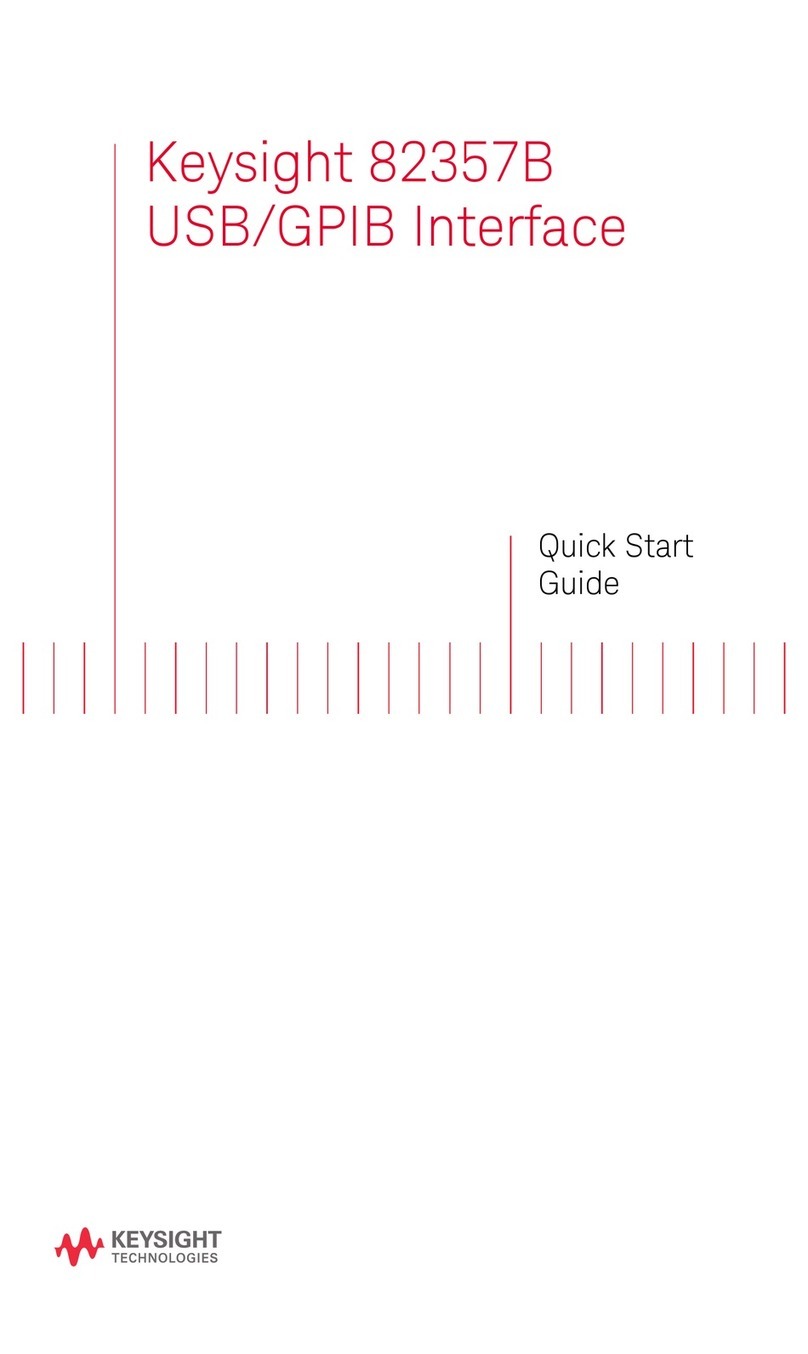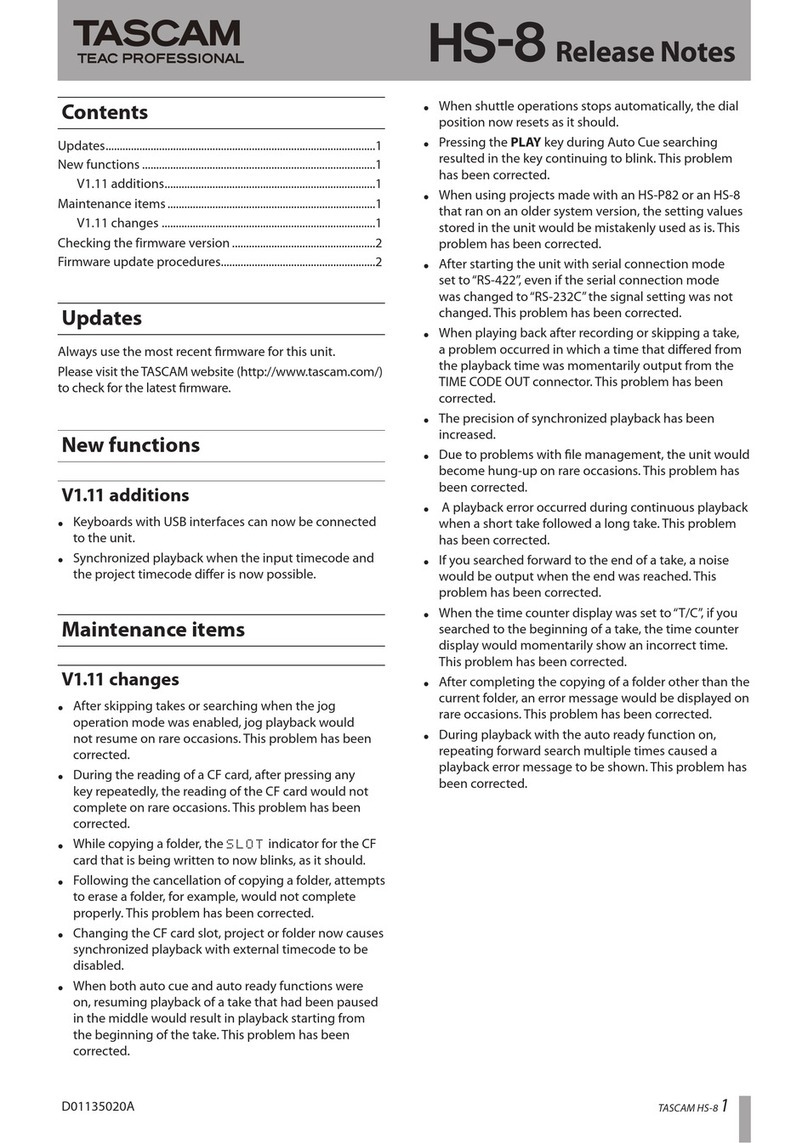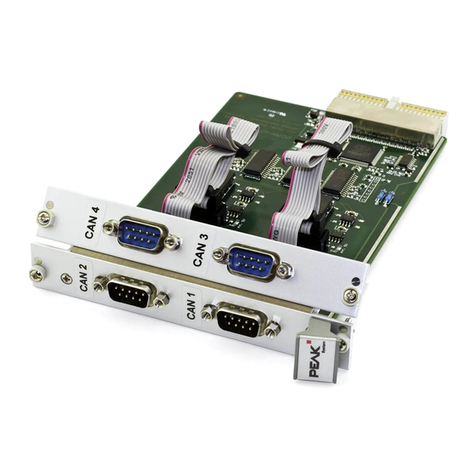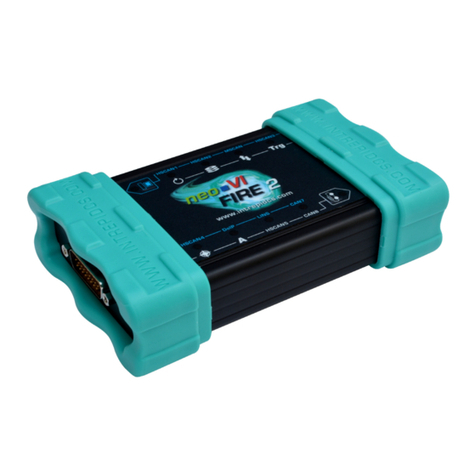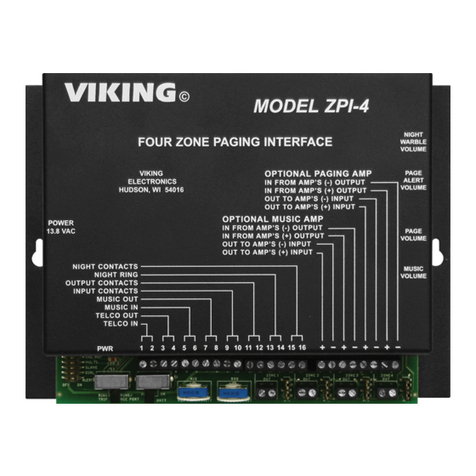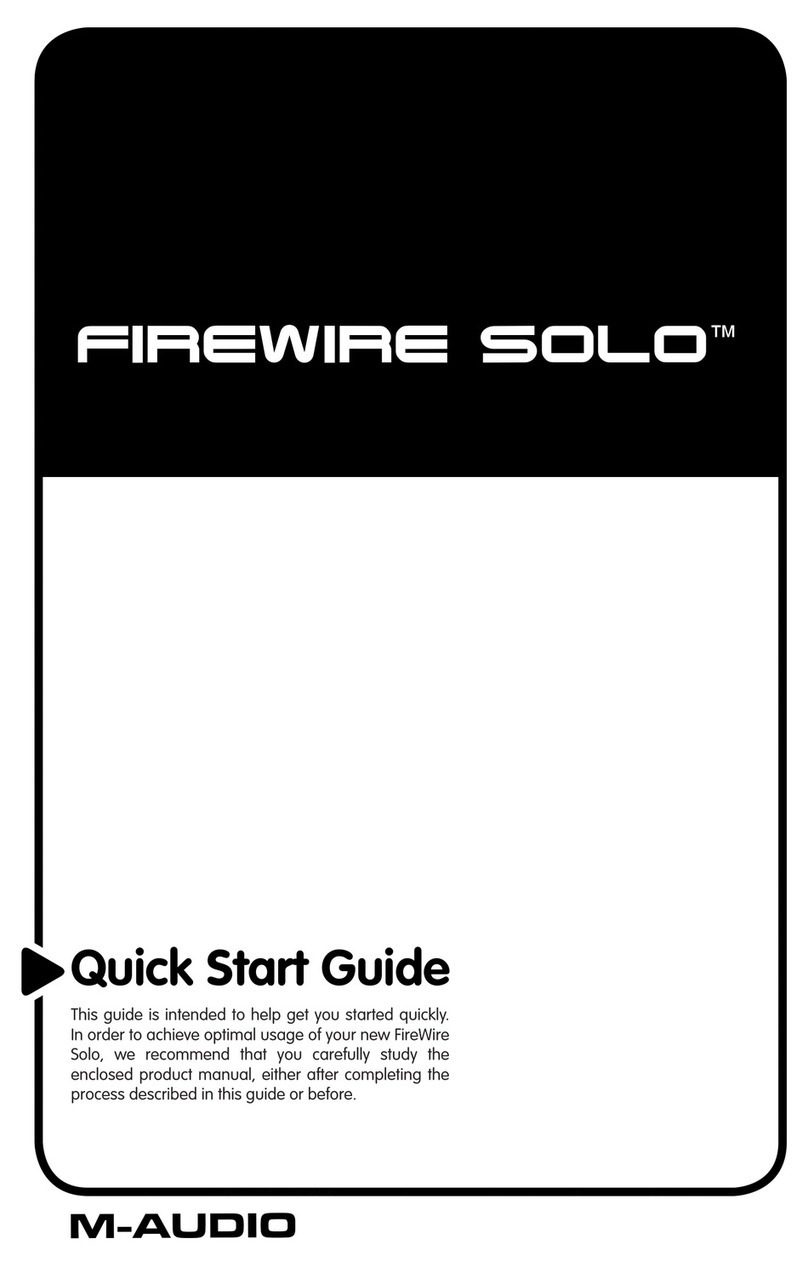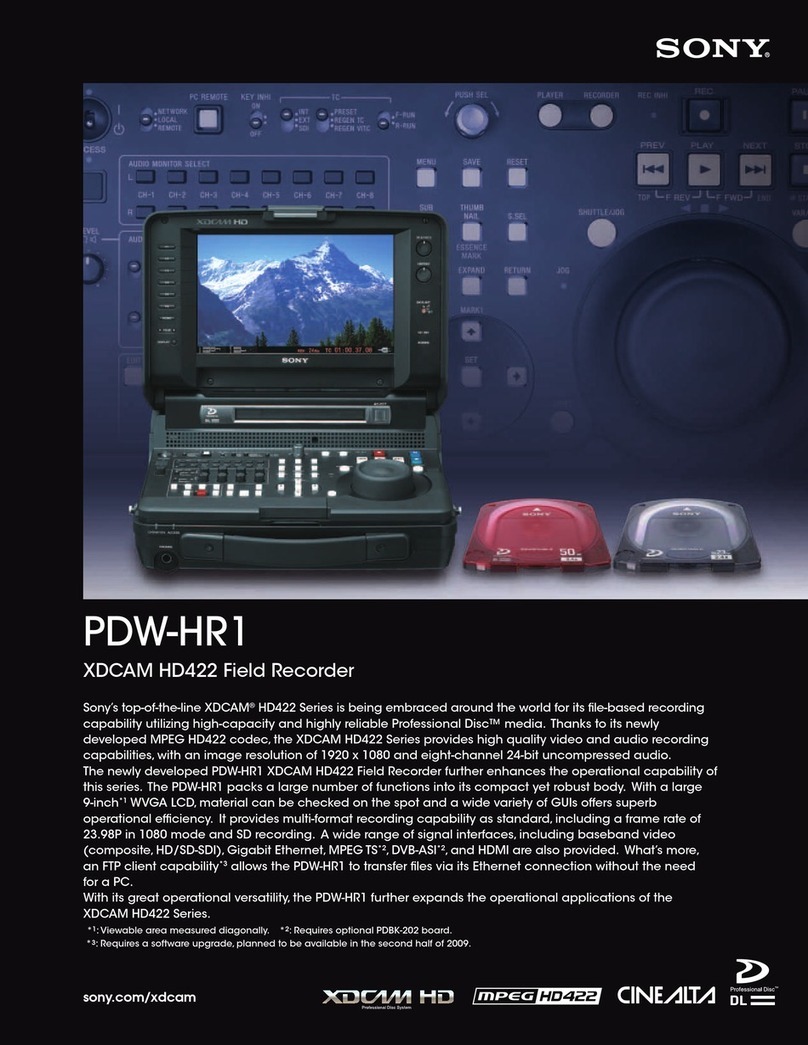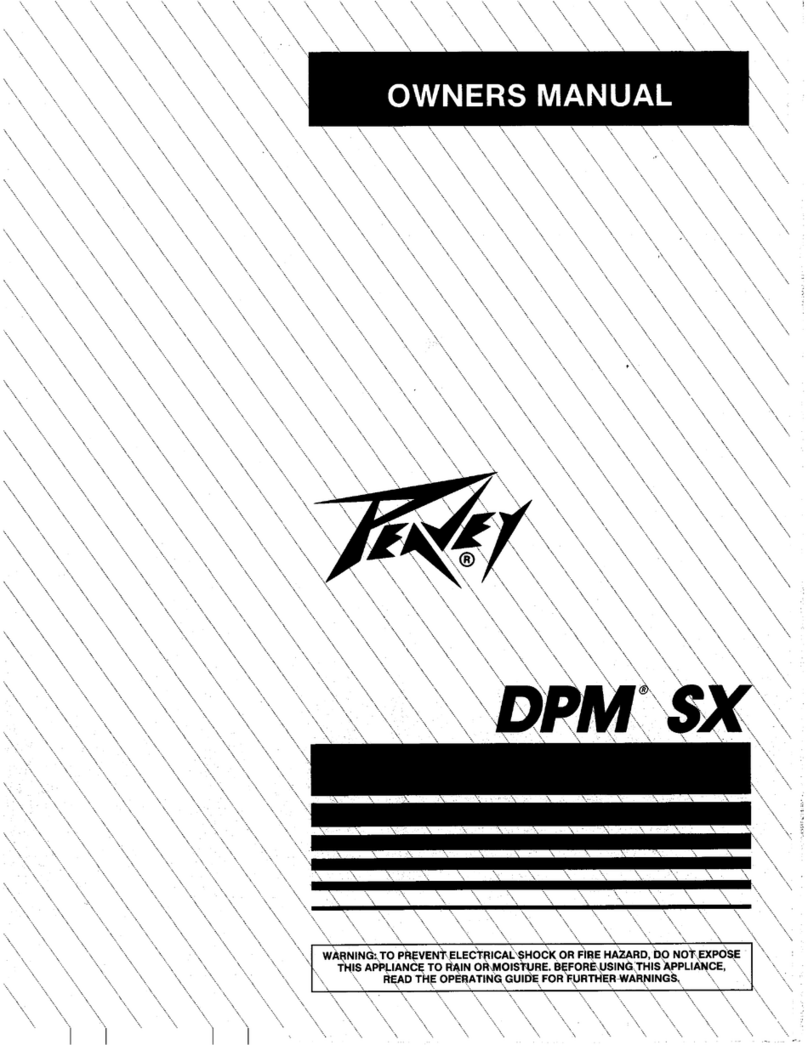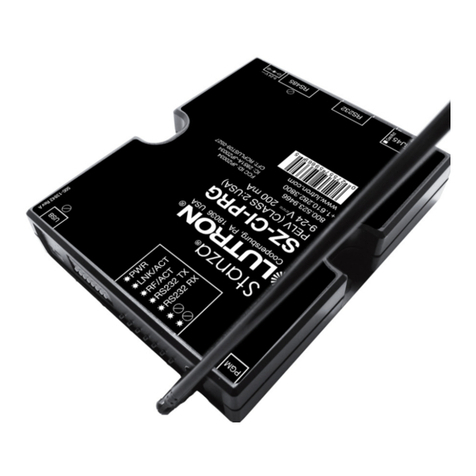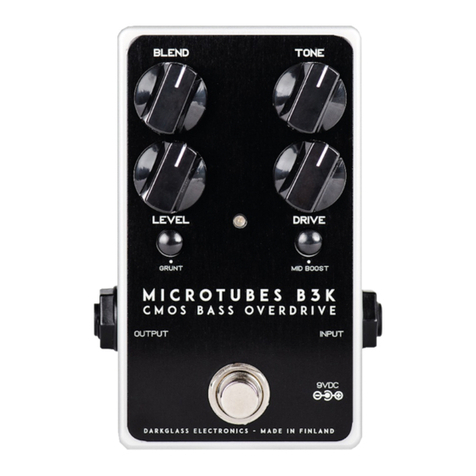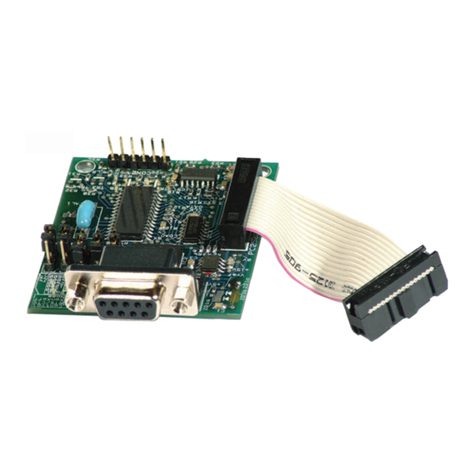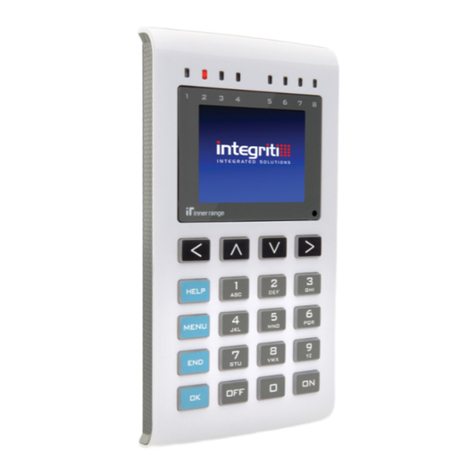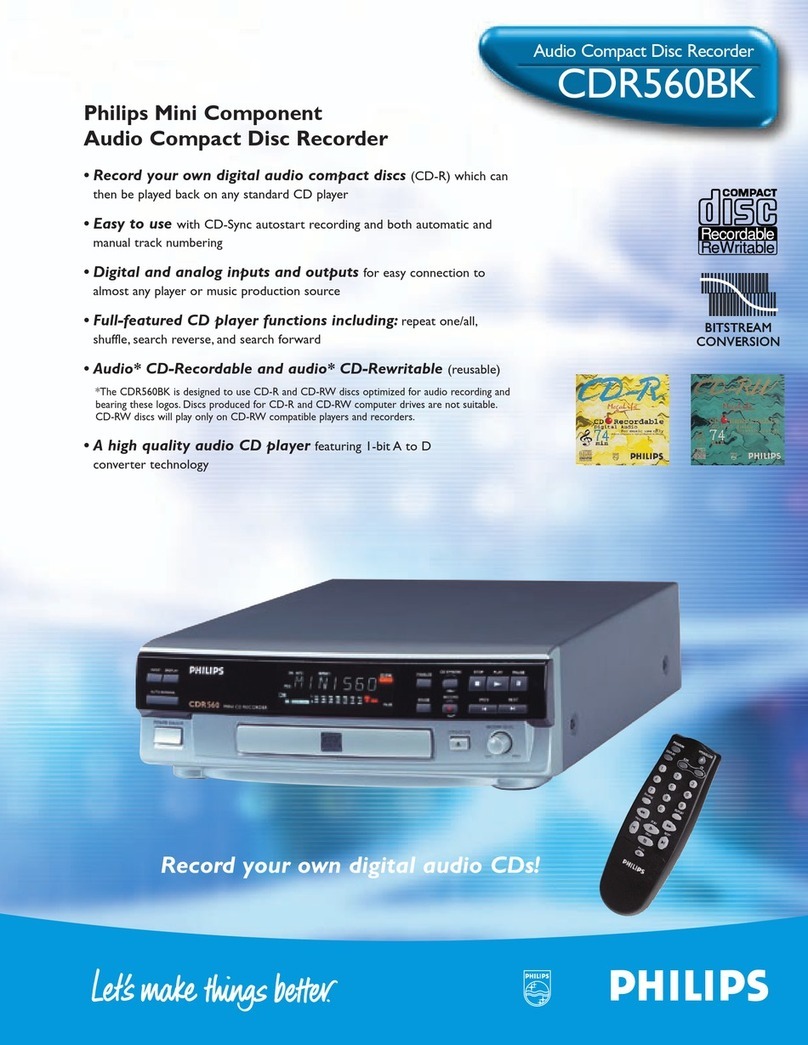Sentek SDI-12 II Series User manual

S
SE
EN
NT
TE
EK
K
S
SD
DI
I-
-1
12
2
S
SE
ER
RI
IE
ES
S
I
II
I
Probe Interface Manual Version 1.1
(For firmware revision 1.3.4 or above)

Sentek SDI-12 Series II Probe Manual
Copyright © 2001 –2014 Sentek Pty Ltd All rights reserved Page i
All rights reserved. No part of this document may be reproduced, transcribed, translated into any language or
transmitted in any form electronic or mechanical for any purpose whatsoever without the prior written
consent of Sentek Pty Ltd. All intellectual and property rights remain with Sentek Pty Ltd.
All information presented is subject to change without notice.
2001-2014 Sentek Pty Ltd
Sentek™, EnviroSCAN™, EasyAG™and TriSCAN™are registered trademarks of Sentek Pty Ltd.
Details of SDI-12 specifications can be obtained from the SDI-12 Support Group, Technical Committee, at
http://www.sdi-12.org/
Sentek Pty Ltd
A.C.N. 007 916 672
77 Magill Road
Stepney, South Australia 5069
Phone: +61 8 8366 1900
Facsimile: +61 8 8362 8400
Internet: http://www.sentek.com.au
Email: [email protected]
SDI-12 Rev 1.1 (2014-01-10)

Sentek SDI-12 Series II Probe Manual
Copyright © 2001 –2014 Sentek Pty Ltd All rights reserved Page ii
Sentek - Statements of Compliance
FCC note of compliance and statement of liability
Electro-Magnetic Compliance
This equipment has been tested and found to comply with the limits for a Class B digital device,
pursuant to part 15 of the FCC rules. These limits are designed to provide reasonable protection against
harmful interference in a residential installation. This equipment generates, uses and can radiate radio
frequency energy and, if not installed and used in accordance with the instructions, may cause harmful
interference to radio communications. However, there is no guarantee that interference will not occur
in a particular installation. If this equipment does cause harmful interference to radio or television
reception, which can be determined by turning the equipment off and on, the user is encouraged to try
to correct the interference by one or more of the following measures:
Reorientation or relocation of the receiving antenna.
Connection of the equipment into an outlet on a circuit different from that to which the receiver
is connected.
Consultation with the dealer or an experienced radio/TV technician.
EMC approvals
The EnviroSCAN and EasyAG SDI-12 Series II probes comply with standard "EN61326:1997
Amendment 1:1998, Amendment 2:2001, Amendment 3:2003 EMC standard for equipment for
measurement, control and laboratory use"
The equipment complies with the following specifications:
EN55011: 1998, Amendment 1: 1999 Radiated and conducted emissions
EN61000-4-2: 1995 Immunity to Electrostatic Discharge (ESD)
EN61000-4-3: 2002 Immunity to Radiated Fields (RF)
EN61000-4-4: 1995 Immunity to Electrical Fast Transients (EFT)/ Bursts
EN61000-4-5:1995 Immunity to Surges
EN61000-4-6:1996 Immunity to Conducted RF
FCC Part 15 Class B
Marking
The above EMC approvals allow the product to be marked CE, C-tick and FCC.
Modifications
Any modifications to any part of the equipment or to any peripherals may void the EMC compliance of
the equipment.
Radio Interference
The probe is not to be operated in free air as it may cause interference to radio communication devices

Sentek SDI-12 Series II Probe Manual
Copyright © 2001 –2014 Sentek Pty Ltd All rights reserved Page iii
Table of Contents
Sentek - Statements of Compliance ..................................................................... ii
FCC note of compliance and statement of liability............................................................ii
EMC approvals........................................................................................................................ii
Marking ...............................................................................................................................ii
Modifications......................................................................................................................ii
Radio Interference.............................................................................................................ii
The EnviroSCAN and EasyAG SDI-12 Probe Interface ......................................1
About the SDI-12 probe interface........................................................................................1
What is SDI-12? ......................................................................................................................1
What are the EnviroSCAN and EasyAG SDI-12 probe interfaces?...............................1
References ................................................................................................................................1
What is the Intelligent Probe Configuration Utility? .........................................................1
Setting the Probe Configuration......................................................................................2
SDI-12 Probe Interface......................................................................................... 4
About setting up the EnviroSCAN and EasyAG SDI-12 probe interface ....................4
Why do I need to configure the SDI-12 probe interface? ................................................4
SDI-12 Communication ....................................................................................... 5
About the SDI-12 Communication......................................................................................5
Power Sequence.......................................................................................................................5
Timing.......................................................................................................................................6
Addresses..................................................................................................................................7
Data Reading............................................................................................................................7
Data Reading using the Start Measurement Command (aM! or aMn!) .....................8
Data Reading using the Start Concurrent Measurement Command (aC! or aCn!)10
Identification......................................................................................................................... 13
Supported Commands ........................................................................................14
SDI-12 Commands Supported........................................................................................... 14
Extended Commands Supported....................................................................................... 15
EnviroSCAN Technical Specifications...............................................................16
EasyAG Technical Specifications.......................................................................18
Circuit Information ............................................................................................ 20
Appendix A –Soil Moisture and Salinity Management .....................................21
What soil volume does the SDI-12 probe interface measure at a single sensor? ....... 21
What are the water units?.................................................................................................... 21
What part of the soil profile do multiple sensors on the probe measure?................... 22
Salinity Management............................................................................................................ 22
Appendix B - Sensor Specifications................................................................... 23
EasyAG sensors ................................................................................................................... 23
EnviroSCAN sensors .......................................................................................................... 23
Appendix C- Troubleshooting........................................................................... 24

Sentek SDI-12 Series II Probe Manual
Copyright © 2001 –2014 Sentek Pty Ltd All rights reserved Page iv
Table of Figures
Figure 1 Intelligent Probe Configuration Utility software ...........................................................................................2
Figure 2 Sentek SDI-12 probe interface communication power sequence...............................................................6
Figure 3 Voltage levels on the SDI-12 line during an Acknowledge Active command (a!)....................................6
Figure 4: EnviroSCAN SDI-12 probe interface board layout.................................................................................. 16
Figure 5 EasyAG SDI-12 probe interface board layout............................................................................................ 18
Figure 6: SDI-12 interface circuit diagram .................................................................................................................. 20
Figure 7 TTL interface circuit diagram........................................................................................................................ 20
Figure 8: Measurements using metric units................................................................................................................. 21
Figure 9: Measurements using imperial units.............................................................................................................. 22
Figure 10: Measurements of multiple sensors on the probe..................................................................................... 22

Sentek SDI-12 Series II Probe Manual
Copyright © 2001 –2014 Sentek Pty Ltd All rights reserved Page 1
The EnviroSCAN and EasyAG SDI-12 Probe Interface
About the SDI-12 probe interface
This section provides information about the EnviroSCAN and EasyAG SDI-12 probe interfaces.
Note:
Sentek Temperature and Humidity sensors require an EnviroSCAN probe interface with Firmware
SDI12 version 1.4.1 or later. Earlier versions will operate successfully but will not detect these sensors.
What is SDI-12?
SDI-12 (Serial Digital Interface at 1200 baud) is a standard communication protocol, allowing
connection of multiple sensors to an SDI-12 compatible data logger. SDI-12 communicates using a
cable containing three(3) conductors:
a serial communication line
a ground line
a 12V line
The EnviroSCAN and EasyAG SDI-12 probe interfaces support commands from version 1.2 of the
SDI-12 communication protocol. For more information on SDI-12, visit www.sdi-12.org.
What are the EnviroSCAN and EasyAG SDI-12 probe interfaces?
The EnviroSCAN and EasyAG SDI-12 probe interfaces are used to allow an SDI-12 compatible
device to communicate with and retrieve data from multiple Sentek sensors installed on a single probe.
Both EnviroSCAN and EasyAG SDI-12 probe interfaces behave as a slave device, meaning they are
not capable of logging information or sampling data themselves. The interface must be attached to an
SDI-12 compatible device acting as a master device, which will issue SDI-12 commands to instruct the
probe interface what to do. When instructed to sample data, the SDI-12 probe interface will retrieve
values from each sensor configured on the probe. These values are returned to the master device for
storage.
The probe and its sensors are configured using the Intelligent Probe Configuration Utility (see section
What is the intelligent Probe Configuration Utility?).
References
Sentek Probe Configuration Utility
Sentek TriSCAN Agronomic User Manual
Sentek Calibration Manual
What is the Intelligent Probe Configuration Utility?
The Intelligent Probe Configuration Utility is provided to configure the EnviroSCAN and EasyAG
SDI-12 probe interfaces with depth location, normalization values (air and water counts) and
calibration information for each sensor installed on the probe. This information is stored in non-
volatile memory, and is used to produce the calculated value (value that has been processed via the
interfaces calibration formula) from each sensor on the probe.
Communication between the Intelligent Probe Configuration Utility and the EnviroSCAN and
EasyAG SDI-12 probe interface is done using the Intelligent Probe Configuration Utility cable from a
computers communication port to the probe interfaces TTL port.

Sentek SDI-12 Series II Probe Manual
Copyright © 2001 –2014 Sentek Pty Ltd All rights reserved Page 2
Note: Temperature Sensors are currently not supported by the EnviroSCAN and EasyAG SDI-12
probe interface.
Note: Information stored in non-volatile memory will not be lost when power is removed from the
SDI-12 probe interface.
Figure 1 Intelligent Probe Configuration Utility software
Setting the Probe Configuration
The Intelligent Probe Configuration Utility is provided to configure the EnviroSCAN and EasyAG
SDI-12 probe interfaces with depth location, normalization values (air and water counts) and
calibration.
Auto-detect Sensors
Auto-detect Sensors will detect all sensors currently installed on the probe. After the sensors are
detected the configuration information (including type of sensor) will be displayed in the Probe
Configuration list.
All sensor information must be valid before the configuration can be written to the probe.
Normalising Sensors
Normalization is the setting of the range over which the sensor is effective. For example, soil moisture
sensors have a range bounded by the 2 extremes, air and water. The normalization process is necessary
to adjust for any variances that may occur during the production of the sensor.
Changing the Calibration Information
The sensor coefficients cell is used to store A, B and C coefficients. The coefficients are entered in A, B
then C order, separated by semicolons.
It is possible to change the calibration coefficients through the Probe Configuration Utility:
Moisture sensor A,B,C values should only be changed to reflect the characteristics of the soil in
which the probe is installed. See the Sentek Calibration Manual for further information.
Salinity sensor ABC values should not be changed.
Temperature sensors ABC values are preset to supply values in degrees Celsius.
Humidity sensors ABC values are preset to return humidity in the range 0% to 100%.

Sentek SDI-12 Series II Probe Manual
Copyright © 2001 –2014 Sentek Pty Ltd All rights reserved Page 3
Setting the SDI-12 Address
The address of the probe should be in the range "0" to "9", "A" to "Z" and "a" to "z".

Sentek SDI-12 Series II Probe Manual
Copyright © 2001 –2014 Sentek Pty Ltd All rights reserved Page 4
SDI-12 Probe Interface
About setting up the EnviroSCAN and EasyAG SDI-12 probe interface
This section provides information on setting up the EnviroSCAN and EasyAG SDI-12 probe
interfaces.
Why do I need to configure the SDI-12 probe interface?
The EnviroSCAN and EasyAG SDI-12 probe interface must be configured to ensure valid
information is reported to the data logger when data is requested. This information includes the
number of sensors, normalization values (air and water counts) and calibration information.
By default, each SDI-12 probe interface is supplied with an SDI-12 address of "0". If multiple probes
are to be installed on an SDI-12 bus, each SDI-12 probe interface must be assigned a unique address
(see section Addresses).
Warning!
Incorrect configuration information stored in the EnviroSCAN or EasyAG SDI-12 probe interface will
result in incorrect volumetric water content (mm/10cm) readings being reported to the controlling
device.
For more information on setting up the EnviroSCAN and EasyAG SDI-12 probe interface, refer to
the Intelligent Probe Configuration Utility online help.

Sentek SDI-12 Series II Probe Manual
Copyright © 2001 –2014 Sentek Pty Ltd All rights reserved Page 5
SDI-12 Communication
About the SDI-12 Communication
This section provides information about the SDI-12 communication protocol used by the
EnviroSCAN and EasyAG SDI-12 probe interfaces.
Power Sequence
Figure 2 shows the typical power consumption modes (at 12V) of the EnviroSCAN and EasyAG
SDI-12 probe interface during communication with an SDI-12 compatible device.
When power is applied, it takes about 750ms before the probe can process SDI-12 commands.
The SDI-12 probe interface, at power up, will remain in idle mode for 150milliseconds. If a break is not
received, the probe interface will be placed in sleep mode.
An SDI-12 compatible device will send a break to wake all SDI-12 probe interfaces on the SDI-12 bus
before a command is sent. When this break is received, the SDI-12 probe interface will then be placed
in idle mode, ready to communicate with the controlling device. The probe interface will remain in idle
mode while the command is being processed. If a break (and valid communication) is not received
within 150 milliseconds of the last command, the SDI-12 probe interface will be placed back into sleep
mode.
During a request to sample data, the SDI-12 probe interface will sample all sensors on the probe
(sampling mode), then be placed into standby mode.
See sections EnviroSCAN Technical Specifications and EasyAG Technical Specifications for current usage
graphs at different supply voltages.
For more information on SDI-12 operation, visit www.sdi-12.org.
Note: Valid communication must have an SDI-12 address included in the command that matches that
of the probe interface, and in the format of a valid SDI-12 command.

Sentek SDI-12 Series II Probe Manual
Copyright © 2001 –2014 Sentek Pty Ltd All rights reserved Page 6
Figure 2 Sentek SDI-12 probe interface communication power sequence
Timing
Figure 3 shows voltage levels on the SDI-12 line during transmission of an Acknowledge Active
command (?!) using the "?" wildcard address.
Figure 3 Voltage levels on the SDI-12 line during an Acknowledge Active command (a!)
After the break condition has been sent to the EnviroSCAN or EasyAG SDI-12 probe interface by
holding the line high (above 3.5V, spacing) for 12ms, the line is held low (below 1 V, marking) for a
minimum of 8.3ms before the first character is transmitted.
Each character transmitted consists of a Start Bit (spacing), followed by 7 data bits, followed by an even
parity bit, followed by a stop bit (marking). Characters are transmitted least significant bit (LSB) first
with each bit in the character being 0.833ms wide.
EnviroSCAN or
EasyAG SDI-12 probe
interface in sleep mode
150ms timeout
Process command
(including response)
break
break
no
yes
sample sensors
sleep mode
idle mode
idle mode
sampling mode
0.5mA
20 mA
20 mA
50-80mA
(Moisture or
Salinity or
Temperature
/humidity
Valid
communication
received?

Sentek SDI-12 Series II Probe Manual
Copyright © 2001 –2014 Sentek Pty Ltd All rights reserved Page 7
In this example shown in Figure 3, there is no inter-character gap sent by the SDI-12 probe interface.
The start bit for the second character follows immediately after the stop bit (marking) from the first
character.
Note: The EnviroSCAN and EasyAG SDI-12 probe interface will permit up to 4 bit-times between
characters before rejecting the command.
Following the terminating character (!) of the command, the controlling device must release the line
within 6.5ms. The EnviroSCAN and EasyAG SDI-12 probe interface will hold the line at the marking
level for a minimum of 8.33ms before transmitting the first character of the response.
Addresses
The EnviroSCAN and EasyAG SDI-12 probe interface accepts SDI-12 addresses in the range "0" to
"9", "A" to "Z" and "a" to "z". Setting the probe interface address can be done using the Change
Address command (aAb!) (see SDI-12 Commands Supported) or using the Intelligent Probe
Configuration Utility.
Note: If the new address is invalid, the current address will be kept.
Note: The probe interface will remain unresponsive for approximately 30 ms while the new address is
saved in non-volatile memory.
Note: The probe interface supports "?" (wildcard) as an address only for the Acknowledge Active
command (a!).
Data Reading
The EnviroSCAN and EasyAG SDI-12 probe interfaces accept the Start Measurement command
(aM! or aMn!) and Start Concurrent Measurement command (aC! or aCn!) for obtaining calibrated
values from the probes sensors.
Note: The EnviroSCAN and EasyAG SDI-12 probe interfaces do not support the Continuous
Measurement command (aRn!). The probe will respond with a<CR><LF> in response to this
command.
The EnviroSCAN and EasyAG SDI-12 probe interface returns sensor values in sensor depth order,
starting at the shallowest depth (i.e. 10 cm). A moisture or salinity sensor with a depth of zero (an un-
configured sensor) will not be reported by the SDI-12 probe interface.
As the Start Measurement command (aM! or aMn!) reports how many sensor readings to expect, the
controlling device should issue Send Data commands (aDn!) until it either receives a reply with no data
a<CR><LF>, indicating that the probe abandoned sampling, or that all data has been received), or
until it has received all of specified number of sensor values.
For aMn! Commands, the probe will issue respond with a service request a<CR><LF> when the
sample data is available. The controlling device may request data (aDn!), either after the service request
or after the time specified in the response to the aMn! command.
Note: The controlling device may choose not to issue all Send Data commands (aDn!) when retrieving
the data.
Note: The EnviroSCAN and EasyAG SDI-12 probe interface currently uses a fixed format of "sign
followed by three digits, followed by the decimal point, followed by four decimal digits" (±nnn.nnnn)
to return readings. This may change in future issues of the EnviroSCAN or EasyAG SDI-12 probe
interface firmware (software should not rely on this fixed format).
Note 1: Valid soil moisture values will always be in the range +000.0000 to +101.0000. Soil moisture
data which would result in values in the range -0.1 to 0.0 will be returned as +000.0000. Any soil

Sentek SDI-12 Series II Probe Manual
Copyright © 2001 –2014 Sentek Pty Ltd All rights reserved Page 8
moisture values outside of this range (caused by faulty sensors, incorrect probe installation or
configuration) will be returned as -999.9999. A failed sensor will also return a value of -999.9999.
Note 2: Some third party loggers cannot represent full 7-digit accuracy so convert -999.9999 to -
1000.000.
Note 3: The SDI-12 response time for Series II probes is less than the time in some examples.
Data Reading using the Start Measurement Command (aM! or aMn!)
The following table shows the allocation of the Start Measurement commands (aM! or aMn!):
aM! Read Soil Moisture values 1 –9
aM1! Read Soil Moisture values 10 –16
aM2! Read Salinity values 1 –9
aM3! Read Salinity values 10 –16
aM4! Read Temperature values 1 –9 (EnviroSCAN only)
aM5! Read Temperature values 10 –16 (EnviroSCAN only)
aM6! Read Humidity values 1 –9 (EnviroSCAN only)
aM7! Read Humidity values 10 –16 (EnviroSCAN only)
Note: Start Measurement commands (aM! or aMn!) above "aM7!" will result in a response of
"a0000<CR><LF>".
Soil Moisture Values (aM! and aM1!)
The Start Measurement command (aM! or aM1!) allows up to nine (9) values to be returned. As it is
possible to have up to sixteen(16) soil moisture values from the SDI-12 probe interface, two(2) Start
Measurement commands (aM! or aM1!) are required. The Send Data command (aDn!) may return up to
three (3) values.
Command
Response
aM!
a0139<CR><LF>
The response indicates that 9 soil moisture values will be available within a time of 13 seconds. Before
the 13 seconds elapse the probe will issue a Service Request (a<CR><LF>, where "a" is the probe
address). The controlling device can then issue Send Data commands (aDn!) to read the values.
Command
Response
aD0!
a+001.0000+001.1234+000.0200<CR><LF>
aD1!
a+000.1234+000.0000+123.1234<CR><LF>
aD2!
a+010.1200+000.1243+044.8750<CR><LF>
If there are more than 9 soil moisture values, a further Start Measurement command aM1! must be
issued.
Command
Response
aM1!
a0117<CR><LF>
The response indicates that another 7 soil moisture values will be available within a time of 11 seconds.
Before the 11 seconds, the probe will issue a Service Request (a<CR><LF>, where "a" is the probe
address), and the controlling device will then issue Send Data commands (aDn!) to read the values.
Command
Response
aD0!
a+002.0010+003.1234+001.0200<CR><LF>
aD1!
a+011.1234+001.0100+011.3344<CR><LF>
aD2!
a+012.0230<CR><LF>
Note: The Send Data commands (aDn!) must be issued in increasing order.

Sentek SDI-12 Series II Probe Manual
Copyright © 2001 –2014 Sentek Pty Ltd All rights reserved Page 9
Salinity Values (aM2! and aM3!)
The Start Measurement command (aM2! or aM3!) allows up to nine (9) values to be returned. As it is
possible to have up to sixteen(16) salinity values from the SDI-12 probe interface, two(2) Start
Measurement commands (aM2! or a3M!) are required. The Send Data command (aDn!) may return up
to three(3) values.
Command
Response
aM2!
a0239<CR><LF>
The response indicates that 9 salinity values will be available within a time of 23 seconds. Before the 23
seconds have elapsed the probe will issue a Service Request a<CR><LF>, where "a" is the probe
address. The controlling device can then issue Send Data commands (aDn!) to read the values.
Command
Response
aD0!
a+001.0000+001.1234+000.0200<CR><LF>
aD1!
a+000.1234+000.0000+123.1234<CR><LF>
aD2!
a+010.1200+000.1243+044.8750<CR><LF>
If there are more than 9 salinity values, a further Start Measurement command (aM3!) must be issued.
Command
Response
aM3!
a0187<CR><LF>
The response indicates that another 7 salinity values will be available within a time of 18 seconds.
Before18 seconds elapse, the probe will issue a Service Request a<CR><LF>, where "a" is the probe
address, and the controlling device can then issue Send Data commands (aDn!) to read the values.
Command
Response
aD0!
a+002.0010+003.1234+001.0200<CR><LF>
aD1!
a+011.1234+001.0100+011.3344<CR><LF>
aD2!
a+012.0230<CR><LF>
Note: The Send Data commands (aDn!) must be issued in increasing order.
Temperature and Humidity (aM4! through aM7!)
Temperature and humidity sensors are not available on EasyAG device. The (aM4! through aM7!)
commands will get a reply of a0000!
Each Start Measurement command (aMn!) allows up to nine values to be returned. As it is possible to
have up to sixteen(16) values from the EnviroSCAN SDI-12 probe interface, two Start Measurement
commands (aM4! and aM4! for temperature), or (aM6! And aM7! for humidity) are required. The Send
Data command (aD0! to aD2!) may return up to three values.
Command
Response
aM4!
a0039<CR><LF>
The response indicates that 9 temperature values will be available within a time of 3 seconds. Before
about 3 seconds the probe will issue a Service Request a<CR><LF>, where "a" is the probe address.
The controlling device can then issue Send Data commands (aDn!) to read the values.
If the data command aDn! requests data beyond the number of sensors reported by the aMn!
Command, the response will be a!
Command
Response
aD0!
a+24.99402+24.52802+24.97996<CR><LF>
aD1!
a+24.52375+25.09555+24.48068<CR><LF>
aD2!
a+24.95815+24.38614+24.73441<CR><LF>
aD3!
a<CR><LF>
If there are more than 9 temperature values, a further Start Measurement command (aM5!) must be
issued.
Command
Response
aM5!
a0027<CR><LF>

Sentek SDI-12 Series II Probe Manual
Copyright © 2001 –2014 Sentek Pty Ltd All rights reserved Page 10
Data Reading using the Start Concurrent Measurement Command (aC! or aCn!)
The following table shows the allocation of sensors for the Start Concurrent Measurement commands
(aC! or aCn!):
aC! Read Soil Moisture values 1 –16
aC1! Read Salinity values 1 –16
aC2! Read Temperature values 1 –16 (EnviroSCAN only)
aC3! Read Humidity values 1 –16 (EnviroSCAN only)
aC4! Read Soil Moisture Configuration values C constants 1 –16
aC5! Read Soil Moisture Configuration values B constants 1 –16
aC6! Read Soil Moisture Configuration values A constants 1 –16
aC7! Reserved
aC8! Read Salinity Sensor Depth values 1 –16
aC9! Read Soil Moisture Sensor Depth values 1 –16
The EnviroSCAN and EasyAG SDI-12 probe interface will not issue a service request (a<CR><LF>)
for the aCn! Commands. So they can be issued to multiple probes (each with a different address)
without waiting for the previous probe's data to be available. Data is not available for a probe until the
time specified in the response to the aCn! command.
Note: Start Concurrent Measurement command "aC7!" will result in a response of
"a0000<CR><LF>".
Soil Moisture Values (aC!)
The Start Concurrent Measurement command aC! allows all soil moisture values to be sampled with a
single command. Values are gathered in the same way as for the Start Measurement command (aM! or
aMn!), but the Send Data command (aDn!) may return up to eight (8) values.
Command
Response
aC!
a02116<CR><LF>
The response indicates that 16 soil moisture values will be available after a time of 21 seconds. The
controlling device will then issue Send Data commands (aDn!) to read the values.
Command
Response
aD0!
a+001.0000+001.1234+000.0200+000.1234+000.0000
+123.1234+010.1200+000.1243<CR><LF>
aD1!
a+044.8750+002.0010+003.1234+001.0200+011.1234
+001.0100+001.0100+011.3344<CR><LF>
Salinity Values (aC1!)
The Start Concurrent Measurement command aC1! allows all salinity values to be sampled with a single
command. Values are gathered in the same way as for the Start Measurement command (aM! or aMn!),
but the Send Data command (aDn!) may return up to eight(8) values.
Command
Response
aC1!
A03616<CR><LF>
The response indicates that 16 salinity values will be available after 36 seconds. The controlling device
will then issue Send Data commands (aDn!) to read the values.
Command
Response
aD0!
a+001.0000+001.1234+000.0200+000.1234+000.0000
+123.1234+010.1200+000.1243<CR><LF>
aD1!
a+044.8750+002.0010+003.1234+001.0200+011.1234

Sentek SDI-12 Series II Probe Manual
Copyright © 2001 –2014 Sentek Pty Ltd All rights reserved Page 11
+001.0100+001.0100+011.3344<CR><LF>
Temperature and Humidity sensor values (aC2! and aC3!)
Temperature and humidity sensors are not available on EasyAG devices. The (aC2! through aC3!)
commands will get a reply of a0000!
The Start Concurrent Measurement command aC2! and aC3! allow all temperature sensors or all
humidity sensor values to be sampled with a single command. Values are gathered in the same way as
for the Start Measurement command (aM! or aMn!), but the Send Data command (aD0! And aD1!)
may each return up to eight(8) values.
There are no SDI-12 commands to retrieve the depth and calibration coefficient ABC from
temperature sensor or humidity. You must inspect or change these values using Probe Configuration
Utility.
Command
Response
aC2!
a00416<CR><LF>
The response indicates that 16 temperature sensors exists and values will be available after 4 seconds.
The controlling device will then issue Send Data commands (aDn!) to read the values.
Command
Response
aD0!
a+24.96650+24.47385+24.96842+24.46163+25.01033+24.44856
+24.95718+24.48288<CR><LF>
aD1!
a+24.73719+25.11700+24.55654+25.03257+24.50156+25.02423
+24.55547+24.71886<CR><LF>
aD2!
a<CR><LF>
Soil Moisture Configuration Coefficient Values (aC4!, aC5! and aC6!)
The Start Concurrent Measurement commands (aC4! To aC6!) allow all soil moisture A, B and C
constants to be sampled with a single command. Values are gathered in the same way as for the Start
Measurement command (aM! or aMn!), but the Send Data command (aDn!) may return up to eight(8)
values.
A Constants are retrieved with the Start Concurrent Measurement command aC6!
Command
Response
aC6!
a00116<CR><LF>
The response indicates that 16 A constant value will be available after 1second. The controlling device
will then issue Send Data commands (aDn!) to read the values.
Command
Response
aD0!
a+000.1957+000.1957+000.1957+000.1957+000.1957
+000.1957+000.1957+000.1957<CR><LF>
aD1!
a+000.1957+000.1957+000.1957+000.1957+000.1957
+000.1957+000.1957+000.1957<CR><LF>
B Constants are retrieved with the Start Concurrent Measurement command aC5!
Command
Response
aC5!
a00116<CR><LF>
The response indicates that 16 B constant values will be available after 1second. The controlling device
will then issue Send Data commands (aDn!) to read the values.
Command
Response
aD0!
a+000.4040+000.4040+000.4040+000.4040+000.4040
+000.4040+000.4040+000.4040<CR><LF>
aD1!
a+000.4040+000.4040+000.4040+000.4040+000.4040
+000.4040+000.4040+000.4040<CR><LF>

Sentek SDI-12 Series II Probe Manual
Copyright © 2001 –2014 Sentek Pty Ltd All rights reserved Page 12
C Constants are retrieved with the Start Concurrent Measurement command aC4!
Command
Response
aC4!
a00116<CR><LF>
The response indicates that 16 C constant values will be available after 1 second. The controlling device
will then issue Send Data commands (aDn!) to read the values.
Command
Response
aD0!
a+000.0285+000.0285+000.0285+000.0285+000.0285
+000.0285+000.0285+000.0285<CR><LF>
aD1!
a+000.0285+000.0285+000.0285+000.0285+000.0285
+000.0285+000.0285+000.0285<CR><LF>
Temperature and Humidity Configuration Coefficient Values
These values are not available through SDI-12 commands. They can be viewed and changed using the
Probe Configuration Utility.
Soil Moisture Sensor Depth Values (aC9!)
The Start Concurrent Measurement commandaC9! allows all soil moisture depth values to be sampled
with a single command. Values are gathered in the same way as for the Start Measurement command
(aM! or aMn!), but the Send Data command (aDn!) may return up to eight(8) values.
Command
Response
aC9!
a00116<CR><LF>
The response indicates that 16 soil moisture depth values will be available after 1second. The
controlling device will then issue Send Data commands (aDn!) to read the values.
Command
Response
aD0!
a+010.0000+020.0000+030.0000+040.0000+050.0000
+060.0000+070.0000+080.0000<CR><LF>
aD1!
a+090.0000+100.0000+110.0000+120.0000+130.0000
+140.0000+150.0000+160.0000<CR><LF>
Salinity Sensor Depth Values (aC8!)
The Start Concurrent Measurement command "aC8!" allows all salinity depth values to be sampled with
a single command. Values are gathered in the same way as for the Start Measurement command (aM! or
aMn!), but the Send Data command (aDn!) may return up to eight(8) values.
Command
Response
aC9!
a00116<CR><LF>
The response indicates that 16 salinity depth values will be available after 1second. The controlling
device will then issue Send Data commands (aDn!) to read the values.
Command
Response
aD0!
a+010.0000+020.0000+030.0000+040.0000+050.0000
+060.0000+070.0000+080.0000<CR><LF>
aD1!
a+090.0000+100.0000+110.0000+120.0000+130.0000
+140.0000+150.0000+160.0000<CR><LF>
Temperature and Humidity Sensor Depth Values
These values are not available through SDI-12 commands. They can be viewed and changed using the
Probe Configuration Utility.

Sentek SDI-12 Series II Probe Manual
Copyright © 2001 –2014 Sentek Pty Ltd All rights reserved Page 13
Identification
The EnviroSCAN and EasyAG SDI-12 probe interface will respond with a string of the following
format when sent the Send Identification command (aI!):
Example:
allccccccccmmmmmmvvvxxxxxxxxxxxx<CR><LF>
412SENTEK XEPI 141C01108100000<CR><LF>
Where: 4The sensor address
12 SDI-12 version number, version 1.2
SENTEK Company name
XEPI Model name
(XEPI for EnviroSCAN, XIPI for EasyAG)
141 Model version, version 1.4.1
C01108100000 Interface Serial number
Note: The EnviroSCAN and EasyAG SDI-12 probe interface firmware version consists of a
major/minor/sub-minor number. Since SDI-12 allocates only three characters, when any number
exceeds 9, the characters "A" to "Z", then "a" to "z" is used. If the number exceeds 61 an asterisk (*) is
shown.
The EnviroSCAN and EasyAG SDI-12 probe interface stores a 64-bit serial number. The Probe
Configuration Utility will report all 64 bits as a hexadecimal number. The first two digits (8 bits) of this
serial number are always "10" or "01", and the last two digits (8 bits) are a Cyclic Redundancy Check
(CRC). The serial number reported via SDI-12 omits the first and last 8 bits, providing the remaining
48 bits as the serial number.
The serial number for the above example is:
10C4223800000097 As reported by Probe Configuration Utility
C42238000000 As reported by SDI-12

Sentek SDI-12 Series II Probe Manual
Copyright © 2001 –2014 Sentek Pty Ltd All rights reserved Page 14
Supported Commands
SDI-12 Commands Supported
The following commands are supported by the EnviroSCAN and EasyAG SDI-12 probe interfaces:
Command
Name
Response
a!
Acknowledge
Active
a<CR><LF>
The probe interface address
aI!
Send
Identificati
on
allccccccccmmmmmmvvvxxxxxxxxxxxx<CR><LF>
Identification information
aAb!
Change
Address
a<CR><LF>
The probe interface address
aM!
Start
Measurement
atttn<CR><LF>
Delay (ttt) in seconds and number of
values (n) up to 9
aMn!
Start
Measurement
n in range
"1" - "7"
atttn<CR><LF>
Delay (ttt) in seconds and number of
values (n) up to 9
Note: A response of a0000<CR><LF> is
provided indicating all values are
served by previous Start Measurement
commands (aMn!)
aC!
Concurrent
Measurement
atttnn<CR><LF>
Delay (ttt) and number of values (nn) up
to 16
aCn!
Concurrent
Measurement
n in range
"1" - "9"
atttnn<CR><LF>
Delay (ttt) and number of values (nn) up
to 16
Note: A response of a0000<CR><LF> is
provided indicating all values are
served by previous Start Concurrent
Measurement (aCn!) commands
aDn!
Send Data
n in range
"0" - "9"
Refer to "Data Reading" section
aV!
Start
verification
a0000<CR><LF>
aRn!
Continuous
Measurement
a<CR><LF>
Not supported
Probe interface will respond with its
address

Sentek SDI-12 Series II Probe Manual
Copyright © 2001 –2014 Sentek Pty Ltd All rights reserved Page 15
Extended Commands Supported
There are no extended commands supported by the EnviroSCAN and EasyAG SDI-12 probe
interface.
Table of contents
